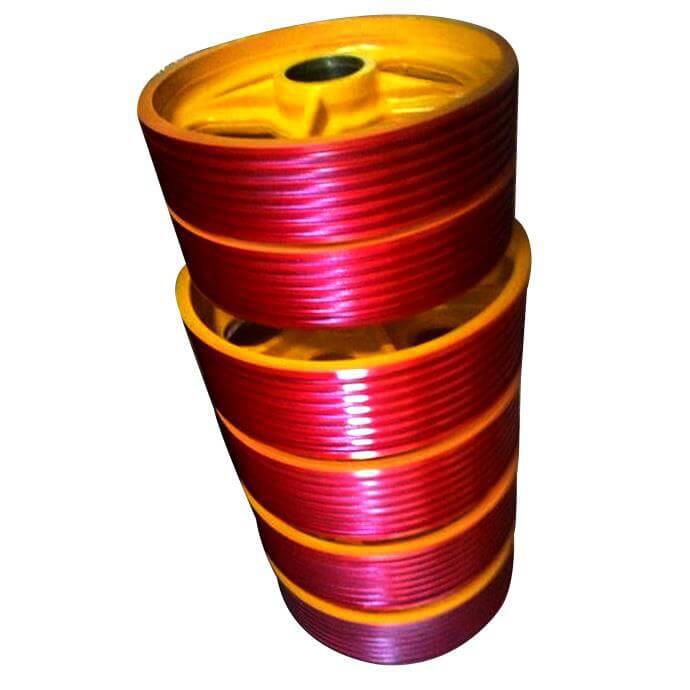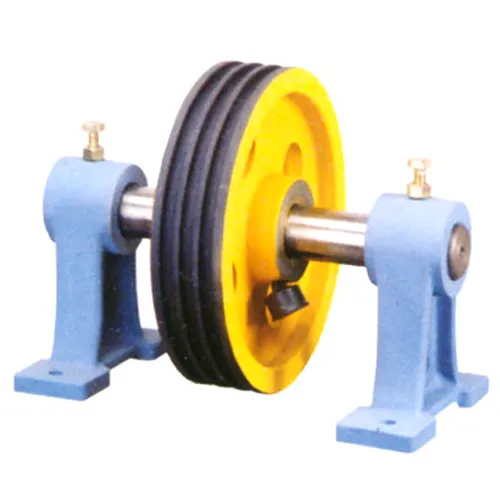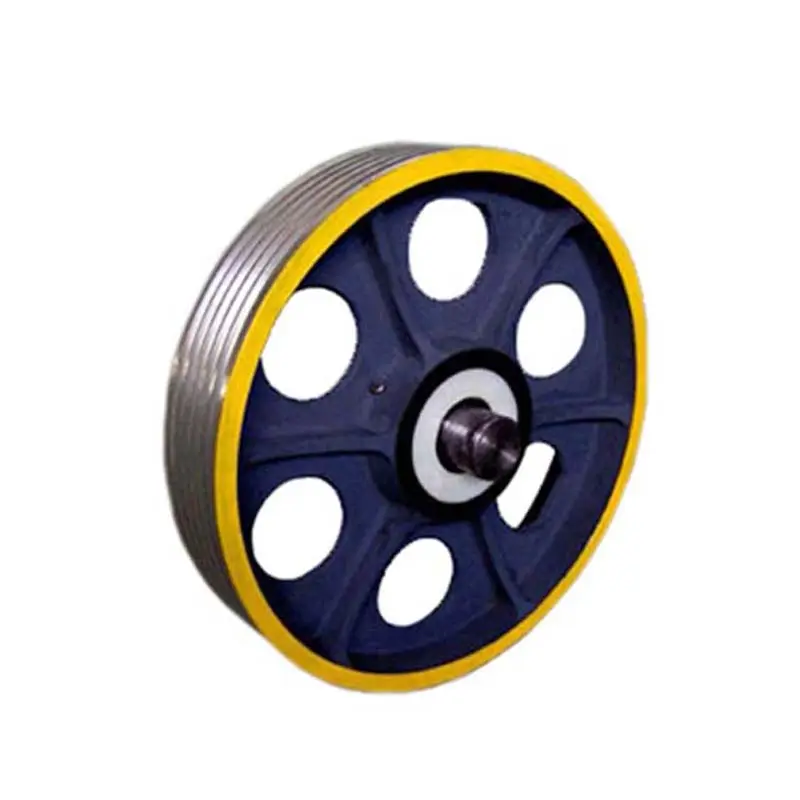Product Description
Make by standard:EN13157
1.chain hoist capacity range from 0.5ton-50ton.
2.compact sized design product suitable for all application.
3.suspension and load hooks are made of alloy steel,35CrMo treated heat and fitted with heavy duty safety latches,fitting groove and inspection points.
4.machined chain sprocket and gear provide smoother,more efficient operation.
5.hook with safety latch securely can rotate freely 360 degrees,
6.ergonomic handle design so that the hoist is easy to operate.
7.hoist have overload protection system.
8.gears are made up of 20CrMnTi material,which ensures toughness and better strength.
9.fitted with high strength grade 80 alloy steel load chain with galvanized finish for corrosion resistance.(comply with EN 818,safety factory 4)*load chain marked with T8 marks as per EN 818-7.)
10.heavy duty guide rollers for avoiding slipage of load chain.
11.rugged construction featuring steel gear case and hand wheel cover for hand chain operation.
12.all hoists tested at 1.5times of Wll.
| Model | HSH | DF-0.25T | DF-0.5T | DF-1T | DF-1.5T | DF-2T | DF-3T | DF-5T | DF-10T | DF-20T |
| Capacity load | (kg) | 250KG | 500kg | 1000kg | 1500kg | 2000kg | 3000kg | 5000kg | 10000kg | 20000kg |
| Standard lift | (m) | 3 | 3 | 3 | 3 | 3 | 3 | 3 | 3 | 3 |
| Load chain Number of falls | 1 | 1 | 1 | 1 | 1 | 1 | 2 | 3 | 8 | |
| Force | (N) | 220 | 240 | 305 | 340 | 360 | 370 | 370 | 380 | 400 |
| Running testload | (kg) | 375 | 750 | 1500 | 2250 | 3000 | 4500 | 7500 | 15000 | 30000 |
| Load chain diameter×Number of falls | (mm) | 4*12 | 5*15 | 6*18 | 8*24 | 8*24 | 10*30 | 10*30 | 10*30 | 10*30 |
| Hang chain diameter×Number of falls | (mm) | 5*25 | 5*25 | 5*25 | 5*25 | 5*25 | 5*25 | 5*25 | 5*25 | 5*25 |
| Net weight | (kg) | 4.5 | 5.7 | 11 | 17 | 17 | 26 | 40 | 73 | 125 |
| (kg/m) | 4.8 | 6 | 11.5 | 17.6 | 17.6 | 26.5 | 40.6 | 73.6 | 133 | |
| (cm) | 24*12.5*12.5 | 27.5*14.5*15.5 | 28*17*18.5 | 31*17.5*22 | 31*17.5*22 | 39*19*26 | 44*24*26 | 58*46.5*24.5 | ||
| 1 | (kg) | 0.34 | 0.541 | 0.77 | 1.36 | 1.36 | 2.2 | 4.4 | 6.6 | 17.6 |
| 1 | (kg) | 0.9 | 0.9 | 0.9 | 0.9 | 0.9 | 0.9 | 0.9 | 0.9 | 1.8 |
| Dimensions(mm) | a | 102 | 122 | 152 | 176 | 176 | 216 | 216 | 244 | 891 |
| b | 28 | 34 | 40 | 52 | 52 | 62 | 65 | 70 | 117 | |
| c | 98 | 118 | 145 | 170 | 170 | 204 | 204 | 204 | 301 | |
| d | 31 | 31 | 31 | 41 | 41 | 45 | 51 | 54 | 84 | |
| e | 114 | 119 | 145 | 157 | 157 | 167 | 167 | 167 | 167 | |
| f | 64 | 65 | 79 | 81 | 81 | 83 | 83 | 83 | 83 | |
| Hmin | 261 | 311 | 361 | 443 | 443 | 431 | 660 | 705 | 1026 |
Payment
| Payment term | L/C | l/c amount above 40.000 usd,we can accept L/C at sight | |
| T/T |
EXW | 30% T/T in advance,paid the balance before shipment |
|
| FOB | |||
| CIF | 30% T/T in advance,paid the balance against copy of B/L |
||
| cfr(c&f) | |||
| paypal | amount lower than 4000usd |
||
| west | |||
| Delivery time | 15~35days after receiving payment for 1 container |
| We welcome use trade assurance,you`ll enjoy: 100% product quality protection 100% on-time shipment protection 100% payment protection for your covered amount |
| Warranty: | 12 Months |
|---|---|
| Application: | Double Beam Crane, Gantry Crane, Bridge Crane, Tower Crane, Single Grinder Crane, Lifting Platform, Small Crane |
| Type: | Chain Hoist |
| Sling Type: | Chain |
| Lift Speed: | <2m/min |
| Maximum Lifting Height: | 3m |
| Samples: |
US$ 1333/Piece
1 Piece(Min.Order) | |
|---|
| Customization: |
Available
| Customized Request |
|---|
What is the significance of compliance with safety standards when using lifting pulleys?
Compliance with safety standards is of utmost importance when using lifting pulleys. Adhering to safety standards ensures the well-being of workers, prevents accidents, and promotes a safe working environment. Here are the key reasons why compliance with safety standards is significant:
1. Worker Safety: Safety standards provide guidelines and regulations designed to protect workers from potential hazards associated with lifting operations. Compliance with these standards helps minimize the risk of accidents, injuries, and fatalities. By following safety procedures and using lifting pulleys in accordance with established standards, workers are less likely to be exposed to dangerous situations.
2. Risk Mitigation: Safety standards are developed based on extensive research, industry best practices, and lessons learned from past incidents. They address potential risks and provide specific measures to mitigate those risks. Compliance with safety standards reduces the likelihood of equipment failure, load instability, and other hazardous situations that can lead to accidents and injuries.
3. Legal and Regulatory Compliance: Many jurisdictions have specific safety regulations and standards that must be followed in lifting operations. Compliance with these legal requirements is essential to avoid penalties, fines, and legal liabilities. It also demonstrates a commitment to responsible and ethical business practices.
4. Industry Reputation: Compliance with safety standards enhances an organization’s reputation within the industry. It demonstrates a commitment to the well-being of workers and a dedication to maintaining high safety standards. Clients, partners, and stakeholders are more likely to trust and engage with companies that prioritize safety compliance.
5. Insurance and Liability: Non-compliance with safety standards may invalidate insurance coverage or result in higher insurance premiums. Insurance providers often require organizations to demonstrate compliance with safety regulations to ensure adequate risk management. Compliance with safety standards reduces the potential for accidents and liability claims, contributing to more favorable insurance terms.
6. Continuous Improvement: Safety standards are regularly updated to incorporate new knowledge, technologies, and industry trends. Compliance with these standards encourages organizations to stay current with the latest safety practices and continuously improve their lifting operations. It fosters a culture of safety awareness and encourages proactive measures to enhance safety and prevent incidents.
7. Effective Risk Assessment: Safety standards provide guidelines for conducting comprehensive risk assessments in lifting operations. Compliance ensures that potential hazards are identified, assessed, and managed effectively. It enables organizations to implement appropriate control measures, such as selecting the right lifting pulleys, using suitable lifting techniques, and providing necessary training and personal protective equipment.
8. Worker Empowerment: Compliance with safety standards empowers workers by providing them with a safe and secure environment to carry out their tasks. It promotes a safety-conscious culture and encourages workers to actively participate in safety programs, report hazards, and suggest improvements. When workers feel valued and protected, their morale, productivity, and overall well-being are positively impacted.
By complying with safety standards when using lifting pulleys, organizations prioritize the safety and welfare of their workers, mitigate risks, ensure legal compliance, enhance their reputation, and foster a culture of safety. It is a vital aspect of responsible and efficient lifting operations.
What maintenance procedures are necessary to ensure the safe and reliable operation of lifting pulleys?
Proper maintenance procedures are essential to ensure the safe and reliable operation of lifting pulleys. Regular maintenance helps identify and address potential issues before they escalate, ensuring that the pulleys function optimally and minimize the risk of accidents or equipment failures. Here are some important maintenance procedures for lifting pulleys:
1. Inspection: Regular visual inspections of the pulleys should be conducted to check for any signs of damage, wear, or misalignment. Inspect the sheaves, bearings, mounting hardware, and other components for cracks, deformities, excessive wear, or corrosion. Look for any loose or missing parts that may affect the pulley’s performance.
2. Lubrication: Proper lubrication is crucial for the smooth operation of lifting pulleys. Follow the manufacturer’s recommendations regarding the type and frequency of lubrication. Apply lubricant to the bearings, sheaves, and other moving parts as required. Ensure that the pulleys are adequately lubricated to reduce friction and prevent premature wear.
3. Tension Adjustment: Check the tension of the lifting cable or rope regularly. The cable or rope should be properly tensioned to prevent slippage or excessive stress on the pulleys. Adjust the tension as needed according to the manufacturer’s guidelines or industry standards.
4. Cleaning: Keep the pulleys clean and free from dirt, debris, or contaminants that could interfere with their proper operation. Use a brush or compressed air to remove any buildup or foreign particles. Avoid using harsh chemicals or solvents that may damage the pulley’s components.
5. Replacement of Worn or Damaged Parts: If any component of the pulley, such as the sheaves, bearings, or mounting hardware, is worn, damaged, or showing signs of deterioration, it should be promptly replaced with suitable replacements recommended by the manufacturer. Use genuine parts to ensure compatibility and maintain the pulley’s performance.
6. Periodic Load Testing: Periodically conduct load testing of the lifting system to ensure the pulleys can handle the intended load capacity. Follow industry standards and guidelines for load testing procedures. This testing helps verify that the pulleys and associated components can safely support and lift the specified loads.
7. Training and Operator Awareness: Ensure that operators are trained in proper lifting procedures, including the use and maintenance of lifting pulleys. Educate them about the importance of regular maintenance, inspection, and safe operating practices. Encourage operators to report any abnormalities or concerns regarding the pulleys to the maintenance personnel or supervisor.
It is crucial to follow the manufacturer’s recommendations and guidelines for maintenance procedures specific to the lifting pulleys in use. Additionally, adhere to any applicable industry standards and regulations governing the maintenance of lifting equipment. By implementing regular maintenance procedures, operators can promote the safe and reliable operation of lifting pulleys, prolong their service life, and minimize the risk of accidents or equipment failures.
In which industries and tasks are lifting pulleys commonly used for material handling?
Lifting pulleys are commonly used for material handling in various industries and tasks. Here are some examples:
1. Construction: In the construction industry, lifting pulleys are used for hoisting and moving heavy construction materials, such as steel beams, concrete blocks, and scaffolding components. They are employed in cranes, hoists, and other lifting equipment to facilitate the vertical and horizontal movement of materials at construction sites.
2. Manufacturing: Lifting pulleys play a crucial role in manufacturing facilities for material handling tasks. They are used in assembly lines, warehouses, and distribution centers to lift and transport raw materials, components, and finished products. Lifting pulleys are often integrated into conveyor systems, overhead cranes, and lifting devices to streamline the movement of materials throughout the manufacturing process.
3. Shipping and Logistics: In the shipping and logistics industry, lifting pulleys are utilized for loading and unloading cargo from ships, trucks, and airplanes. They are employed in cranes, gantries, forklifts, and other material handling equipment to efficiently move containers, pallets, and packages within ports, warehouses, and transportation hubs.
4. Mining and Quarrying: Lifting pulleys are essential in mining and quarrying operations for extracting and transporting minerals, ores, and aggregates. They are used in conveyor systems and mining equipment to lift and transfer heavy loads, such as rocks, coal, and bulk materials. Lifting pulleys in mining applications are designed to withstand harsh environments and heavy-duty usage.
5. Agriculture: Lifting pulleys find application in the agricultural industry for material handling tasks. They are used in farming operations to lift and move bales of hay, bags of feed, and agricultural equipment. Lifting pulleys are often integrated into tractor-mounted loaders, barn hoists, and other agricultural machinery to assist in the handling of various farm materials.
6. Warehousing and Distribution: In warehousing and distribution centers, lifting pulleys are extensively used for material handling tasks. They are employed in forklifts, pallet jacks, and automated storage and retrieval systems to lift and transport goods within the facility. Lifting pulleys enable efficient loading and unloading of palletized and packaged products, optimizing the flow of materials in the supply chain.
Lifting pulleys are versatile tools that are widely employed in industries where material handling is a critical aspect of operations. From construction and manufacturing to shipping and logistics, mining and quarrying, agriculture, and warehousing, lifting pulleys enhance efficiency and safety in the movement of materials across various sectors.
editor by CX
2023-11-07




